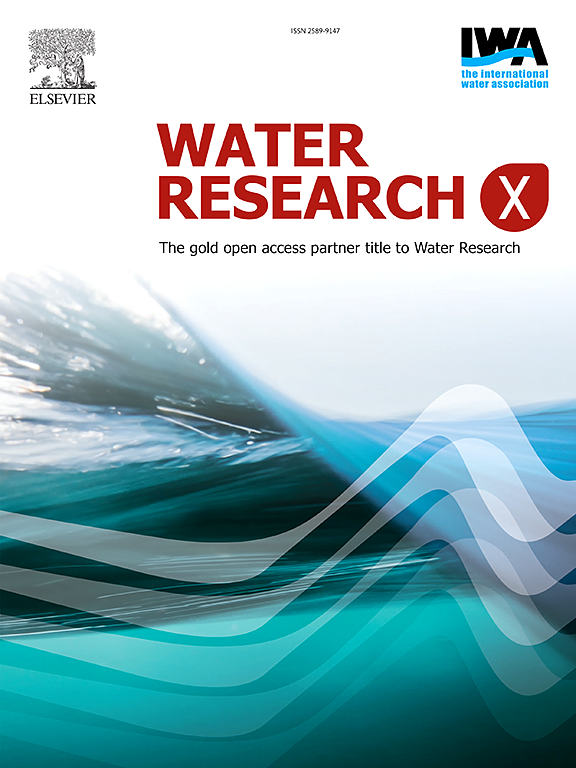Pattern recognition of operational states leading to N2O-emissions in full-scale biological wastewater treatment
IF 8.2
2区 环境科学与生态学
Q1 ENGINEERING, ENVIRONMENTAL
引用次数: 0
Abstract
Given the urgency to reduce greenhouse gas emissions in the whole economy, the abatement of nitrous oxide (N2O) built-up in biological wastewater treatment would be an important contribution of the waste sector. However, the complexity of N2O-formation in activated sludge and non-linear dynamics of operating factors pose difficulties to apply effective measures for a specific high-emission situation in a full-scale context. Facing such complex interactions and unknown relationships, data mining can provide useful support to analyze full-scale datasets. Therefore, the goal of this article is to investigate a data-driven method to understand high-emission patterns and their origins to provide a basis for the development of N2O-mitigation measures. We applied unsupervised artificial neural networks (self-organizing maps) and subsequent clustering to a 3-year, high-resolution dataset to identify and characterize operational states and to analyze the transitions among them. In the case study, hampered denitrification, anaerobic digestion supernatant addition, and indications of snowmelt were found among problematic situations. The transition analysis showed the importance of contextualizing a high-emission pattern as it can emerge from different origins, having implications when developing mitigation measures. Apart from analyzing the shift of operational states, a key advantage of the proposed methodology is the consideration of the combined effect of variables in specific situations. This renders it an effective tool to understand operational patterns. It can further be used to inform experiments by formulating hypotheses and prioritizing variables combinations; providing finally insights towards the development of situation-specific strategies for a low-N2O-operation of full-scale plants.

全面生物废水处理中导致n2o排放的运行状态模式识别
鉴于整个经济中减少温室气体排放的紧迫性,减少生物废水处理中积累的一氧化二氮(N2O)将是废物部门的重要贡献。然而,由于活性污泥中n2o形成的复杂性和运行因素的非线性动力学,很难在全面的环境中针对特定的高排放情况采取有效措施。面对这些复杂的相互作用和未知的关系,数据挖掘可以为分析全面的数据集提供有用的支持。因此,本文的目标是研究一种数据驱动的方法,以了解高排放模式及其起源,为制定n2o减缓措施提供依据。我们将无监督人工神经网络(自组织地图)和随后的聚类应用于3年的高分辨率数据集,以识别和表征操作状态,并分析它们之间的转换。在案例研究中,在有问题的情况下,发现了阻碍反硝化,厌氧消化上清添加和融雪迹象。过渡分析表明,必须将高排放模式置于背景中考虑,因为它可能有不同的根源,对制定缓解措施有影响。除了分析操作状态的变化之外,所提出的方法的一个关键优势是考虑了特定情况下变量的综合影响。这使得它成为理解操作模式的有效工具。它可以进一步通过制定假设和确定变量组合的优先级来为实验提供信息;最后,为全面工厂低n2o运行的具体情况策略的发展提供了见解。
本文章由计算机程序翻译,如有差异,请以英文原文为准。
求助全文
约1分钟内获得全文
求助全文
来源期刊

Water Research X
Environmental Science-Water Science and Technology
CiteScore
12.30
自引率
1.30%
发文量
19
期刊介绍:
Water Research X is a sister journal of Water Research, which follows a Gold Open Access model. It focuses on publishing concise, letter-style research papers, visionary perspectives and editorials, as well as mini-reviews on emerging topics. The Journal invites contributions from researchers worldwide on various aspects of the science and technology related to the human impact on the water cycle, water quality, and its global management.
 求助内容:
求助内容: 应助结果提醒方式:
应助结果提醒方式:


